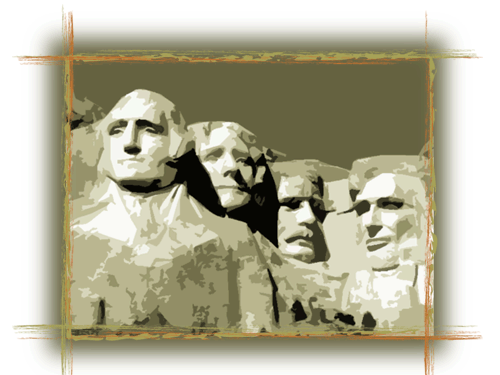現代社会特集・韓国(2016年4月公開):Korea
【構成】
(1)古代~
①日本と朝鮮との関係(古代~)・1(日本語)
②日本と朝鮮との関係(古代~)・2(日本語)
③コリアヒストリー(1392-1910)(英語・英語字幕)⇒安らぎ英語>懐かしきの英語
(2)日本のコリア侵略⇒安らぎ英語>懐かしきの英語
③日本のコリア侵略(1910-1945):10分:英語:英語字幕なし。ただし部分的に英語字幕
④日本のコリア侵略(無声画)
(3)終戦後から
⑤終戦後から
⑥韓国民主主義の道のり
⑦韓国民主主義の道のり
□掲載コンテンツ
①韓国特集:古代からの歴史にみる日本列島と朝鮮半島 1/2 (日本語)
②韓国特集:古代からの歴史にみる日本列島と朝鮮半島 2/2 (日本語)
③韓国特集:Korean History 8/8 Joseon Dynasty 1392~1910 (?? ?? 1392-1910) :(英語)
④韓国特集:Korean History -Japanese Occupation Period(日本のコリア侵略・10分(英語)英語字幕なし。部分的に英語字幕)
⑤韓国特集:The Dynamic Development of Korean Democracy 韓国民主化運動歴史(日本語)
⑥韓国特集:太平洋の世紀 韓国民主化への道のり(英語・日本語解説)
⑦韓国特集:Recent History of Japan and Korea(英語)
□
□
①古代からの歴史にみる日本列島と朝鮮半島 1/2 (日本語)
【YouTube記載】2014/06/18 に公開
□
□
②古代からの歴史にみる日本列島と朝鮮半島 2/2 (日本語)
□
□
③Korean History 8/8 Joseon Dynasty 1392~1910 (조선 왕조 1392-1910) :(英語)
【YouTube記載】2013/03/10 に公開
Joseon (Korean: 조선; Hanja: 朝鮮; also Chosŏn, Choson, Chosun, Cho-sen), was a Korean state founded by Taejo Yi Seong-gye that lasted for approximately five centuries, from July 1392 to October 1897. It was founded following the aftermath of the overthrow of the Goryeo Dynasty in what is today the city of Kaesong. Early on, Korea was retitled and the capital was relocated to modern-day Seoul. The kingdom’s northernmost borders were expanded to the natural boundaries at the Amnok and Duman rivers through the subjugation of the Jurchens. Joseon was the last dynasty of Korean history and the longest-ruling Confucian dynasty.
□
④(日本のコリア侵略・10分(英語)英語字幕なし。部分的に英語字幕
Korean History -Japanese Occupation Period
【YouTube記載】2010/11/16 にアップロード
In the early 20th century, Korea was occupied by Japan. The country was exploited for the benefit of the Japanese Empire. The occupiers attempted to eradicate Korean culture and even forbade Koreans from speaking their own language. But the Koreans resisted continuously, both at home and abroad, until the surrender of Japan, which ended World War II.
□
□
⑤The Dynamic Development of Korean Democracy 韓国民主化運動歴史(日本語)
【YouTube記載】2011/05/03 にアップロード
“The Dynamic Development of Korean Democracy” は、 分断という韓国の特殊な状況の中で民主主義と経済成長とを成し遂げた韓国の民主化運動についての記録です。この記録が世界中の民衆と共有できることを願い、韓国の民主化運動の歴史、そして、今の韓国の社会を正しく理解しようとする人々に有益な手引きになるとたいへん幸であると思っています。
民主化運動記念事業会は韓国における民主主義の発展に中心的な役割を果たした民主化運動の精神。これを国家的に継承、発展させなけれなならないという社会的な合意の下、2001年6月28日に民主化運動記念事業法が制定されました。民主化運動記念事業会は、民主化運動記念事業法に基き、2004年11月12日に設立されました。
民主化運動記念事業会は「韓国民主主義殿堂の建立ならびに運営、民主化運動記念事業及び継承のための行事、民主主義発展のための支援事業、民主化運動に関わる資料の収集、保存、電算化、管理、展示、広報、調査および研究、民主化運動が行われた遺跡の保存等」を行なっております。
□
□
⑥太平洋の世紀 韓国民主化への道のり(英語・日本語解説)
太平洋の世紀 韓国民主化への道のり(英語・日本語解説)
【YouTube記載】2014/08/23 に公開
□
□
⑦韓国特集:Recent History of Japan and Korea(英語)
【YouTube記載】2012/07/16 に公開
Through thrift, hard work and discipline, Japan and later South Korea enjoy economic miracles that bring growth, prosperity and confidence to their once war-ravaged and impoverished people. In Japan the Korean War kickstarts manufacturing, and growth is sustained through export-orientated industries using Western technologies and production methods, and assisted by a dedicated, highly educated labour force strongly committed to improving their country. In the 1960s President Park Chung Hee largely followed Japan ‘s economic policies in steering South Korea’s stellar economic development, but was far more ruthless to dissent and labour movements. The peoples of both countries eventually enjoy the consumer items as the fruits of their efforts, and their personal attitudes change as a result. The introductory scene shows the end of US occupation in Japan.








